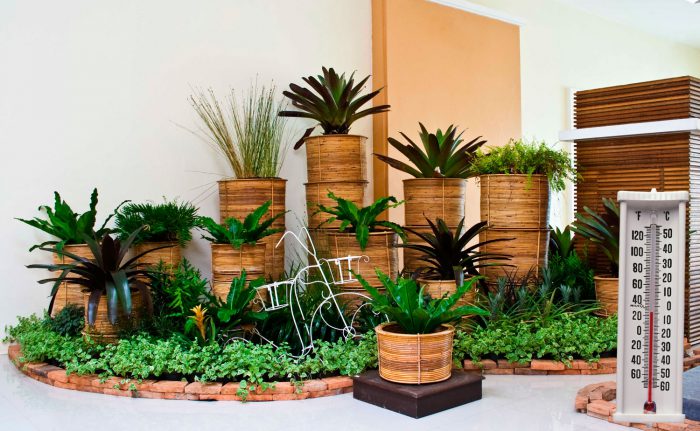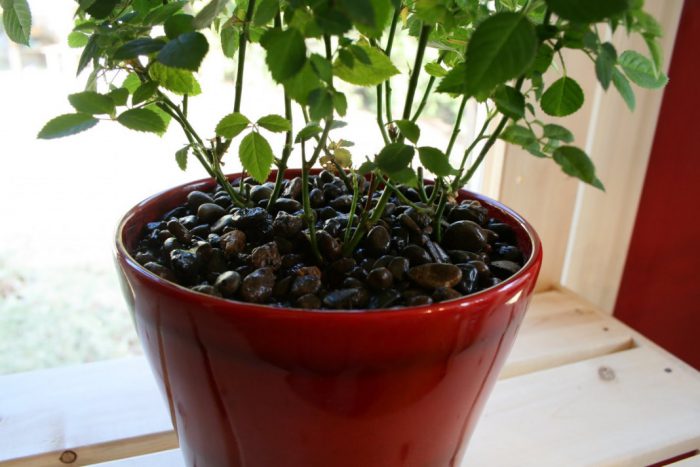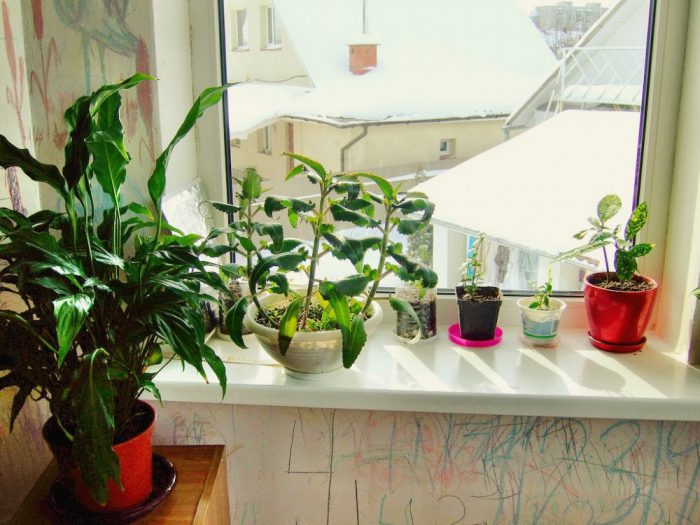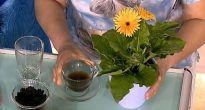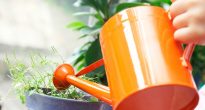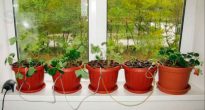How the plant feels, grows and develops, directly depends on air temperature... Indoor plants, or rather, most of them come from the subtropics or tropics. In other latitudes, they have to be grown in greenhouses, where the necessary microclimate is created for them. However, this does not mean at all that absolutely all indoor plants need high air temperature.
There are very few indoor flowers that can grow and develop normally if a high temperature (more than 24 degrees) is constantly maintained in the room where they are located. This circumstance is due to the fact that the conditions of our latitudes are very different from those in their homeland. So, the air humidity here is quite low, the duration of daylight hours is much shorter. The lighting is also less intense. In this regard, in order to create comfortable conditions for such plants, the temperature in the room should also differ from that which is considered the norm in their homeland, and should be much lower.
Content
Features of air temperature for indoor plants
Effect of temperature on the plant
To measure the temperature regime, the amount of heat is determined, as well as the period of time during which this or that temperature was maintained. Household plants have a certain temperature range - the maximum and minimum temperatures within which the flower feels good and develops normally.
In the case when the room temperature is low enough, the vegetation under these conditions slows down both biochemical and physiological processes, or rather, the intensity of respiration, photosynthesis decreases, and the production and distribution of organic matter decreases. If the temperature is above normal, then these processes, on the contrary, are accelerated.
Features of temperature fluctuations (natural)
During the day, there is a rhythmic change in temperature - it rises during the day and decreases at night. Also, this change occurs throughout the year, and this is due to the seasons, smoothly replacing each other.And plants necessarily adapt to this process, taking place where they grow in their natural environment. Plants of temperate latitudes calmly tolerate sharp fluctuations in temperature, and those that are in the tropics tolerate them rather poorly. For most of the "inhabitants" of temperate latitudes, the time when cold weather sets in is marked by the beginning of a period of rest. It is extremely important for them, since this period can have the most positive effect on their intensive growth and development in the future.
In a wide temperature range, when the temperature difference between day and night, summer and winter is large enough, plants such as aloe, sansevier, ficus, clivia, as well as a graduate student.
It is important to remember that at night the temperature must be a couple of degrees lower than during the day.
What is the optimal temperature
In order for decorative deciduous and flowering plants, which include begonias, mulberries, aroids, bromeliads and others, to grow and develop within normal limits, an air temperature of 20 to 25 degrees is needed. 18-20 degrees must be provided to plants belonging to the genus Coleus, peperomia, sanchetia etc. And for those whose homeland is the subtropics (Fatsia, aucuba, zebrina, ivy, tetrastigma, etc.) you need a temperature in the range of 15-18 degrees.
Variegated plants inhabitants of the tropics are the most thermophilic and these include codieum, cordilina, caladium other.
Winter temperature and dormant period
There are plants for which coolness is simply necessary in winter. This is because they begin a dormant period or slow down their growth. So, a temperature of 10-15 degrees is necessary in winter for primrose, pelargonium, hydrangea, and cyclamen... And at 5-8 degrees, rhododendron and eucalyptus just feel great.
To asparagus Sprenger, Anthurium Scherzer and Spathiphylyum Wallis bloomed more abundantly and actively, in the autumn (dormant period) they are placed in a room with a temperature of no more than 15-18 degrees. From the beginning of January, the temperature should be higher in the range of 20-22 degrees.
If a plant does not have flowering, then this is most likely due to disturbances in their life rhythm, or rather, the dormant period.
For example, if in winter the cacti are provided with regular watering and a moderate temperature regime, then they will have ugly growths, and they will not bloom. And hippeastrum buds stop forming, and their owners will only have to admire the lush foliage.
Soil temperature
Typically, the soil in a flower pot has a temperature a couple of degrees different from the indoor air. In winter, it is very important to provide for the hypothermia of the root system. For this it is necessary to take a number of measures. First, the pot should never stand very close to the glass. Secondly, put a mat made of wood, cardboard, cork or foam under the pot. If hypothermia occurs, then the root system will absorb moisture from the soil much worse, which can contribute to the appearance of rot.
So, dieffenbachia feels great when the soil temperature is 24-27 degrees. Experienced flower growers advise filling pallets of flowers such as ficus, gardenia and eucharis, because they just love warm soil.
Features of the attitude to heat of some groups of plants
Plants that are dormant at 5-8 degrees
These plants need a lower temperature in the autumn-winter period and rest: laurel, fatsia, succulent, rhododendron, chlorophytum other.
Heat-loving plants (20 to 25 degrees)
This group includes: dieffenbachia, codieum, caladium, dizigoteka, aglaonema, calathea, orchid, syngonium, akalifa other.
Plants that need moderate warmth (17 to 20 degrees)
This group includes clerodendron, ivy wax, siningia, Liviston palm, afelandru, rheo, anthurium, saintpaulia, pandanus, monstera, coconut tree, ginuru, sawe and others.
Plants in need of coolness (10 to 16 degrees)
This includes: azalea, oleander, pelargonium, aspidistra, ficuses, tradescantia, roses, fuchsia, primroses, aucuba, saxifrage, ivy, cyperus, chlorophytum, araucaria, asparagus, dracaena, begonia, balsam, bromeliads, Kalanchoe, coleus, arrowroot, ferns, sheflera, philodendron, hoya, peperomia, spathiphylyum and others.


Watch this video on YouTube
Consequences of violation of the thermal regime
Sudden changes in temperature
Plants are extremely negative about a sharp decrease in temperature, even more, more than 6 degrees. So, for example, in Dieffenbachia spotted leaves turn yellow and wither if the temperature drops by 10 degrees. Growth scindapsus golden color stops when the temperature drops by 15 degrees.
Due to strong temperature changes, the foliage of indoor plants begins to turn yellow and fall off. In this regard, when airing the room in winter, it is imperative to rearrange the flowers away from the window.
Temperature below normal
If the temperature is below normal, then the flowering of the plant will not come for a long time, or underdeveloped buds may form. The foliage becomes much darker, curls up and begins to fall off. However, succulents and cacti tolerate low temperatures quite well.
Do not forget that in the autumn-winter period on the windowsill the temperature will differ from room temperature downwards by 1–5 degrees.
Temperature above normal
If it is very hot in the room in winter, it will have an extremely negative effect on tropical plants. And even more so if it is hotter at night than during the day. So, when breathing at night, plants consume a very large amount of nutrients accumulated during the day due to photosynthesis. As a result, the plant will be exhausted, its shoots will elongate and become very long, old leaves will dry out and die off, and new ones will be much smaller. The leaves below, like the flowers, will begin to fade, and their edges will acquire a darker color.
Draft
More than one plant will not grow and develop normally in the presence of a draft. This should be taken into account when choosing a place for them. However, there are some plants for which the draft does not cause concern, but there are very few of them (for example, oleander).
Conclusion: almost all indoor plants need to provide a moderate air temperature, taking into account the requirements of various types. And also during the rest period (if they have one), they need a fairly cool temperature.

